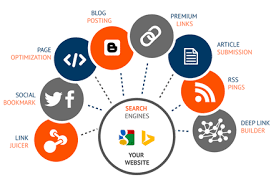Google recently updated its car listing structure data, which is the information that car dealerships use to add their inventory to Google Search and other Google surfaces. The new structure is designed to help car dealerships get more exposure for their listings and make it easier for consumers to find the information they need when shopping for a new car.
What’s New in The Car Listing Structure Data?
The new car listing structure data includes a number of new fields, such as:
- Vehicle make, model, and year
- Body style
- Engine type
- Transmission type
- Fuel type
- Exterior color
- Interior color
- Mileage
- Price
- VIN
- Dealer contact information
Google will use this new data to create more informative and engaging car listings in Search and other Google surfaces. For example, users may see rich results for car listings that include information such as the vehicle’s exterior color, mileage, and price.
How Does the New Car Listing Structure Data Benefit Car Dealerships?
The new car listing structure data offers a number of benefits to car dealerships, including:
- Increased exposure for car listings in Search and other Google surfaces
- More informative and engaging car listings
- The ability to reach more potential customers
How Does the New Car Listing Structure Data Benefit Consumers?
The new car listing structure data also offers a number of benefits to consumers, including:
- Easier to find the information they need when shopping for a new car
- The ability to compare different car listings side-by-side
- A more informative and engaging car shopping experience
How to Implement The New Car Listing Structure Data
Car dealerships can implement the new car listing structure data on their websites by adding structured data markup. Google provides detailed documentation on how to add structured data markup for car listings.
Here is a simplified example of car listing schema code using the new car listing structure data:
{
"@context": "https://schema.org",
"@type": "Vehicle",
"name": "2023 Toyota Camry XSE",
"image": "https://example.com/images/2023-toyota-camry-xse.jpg",
"make": "Toyota",
"model": "Camry",
"modelDate": "2023",
"bodyType": "Sedan",
"engineType": "Gasoline",
"transmissionType": "Automatic",
"fuelType": "Gasoline",
"exteriorColor": "Red",
"interiorColor": "Black",
"mileageFromOdometer": 10000,
"price": 25000,
"vehicleIdentificationNumber": "1234567890ABCDEF12345678",
"seller": {
"@type": "Organization",
"name": "John's Car Dealership",
"address": {
"@type": "PostalAddress",
"streetAddress": "123 Main Street",
"city": "Anytown",
"state": "CA",
"postalCode": "91234"
},
"telephone": "+15555555555"
}
}
This schema code can be added to the HTML of the car listing page on the car dealership’s website. Google will use this data to create more informative and engaging car listings in Search and other Google surfaces.
Car dealerships can also submit their car listings to Google through the Vehicle Listings partner portal. This is a free and easy way to get your car listings featured in Search and other Google surfaces.
Conclusion
Google’s recent update to its car listing structure data is a significant improvement for both car dealerships and consumers. Car dealerships can use the new data to get more exposure for their listings and make it easier for consumers to find the information they need. Consumers can use the new data to find the perfect car for their needs more easily and efficiently.
Follow Our Daily Updates for new Digital Marketing News.




